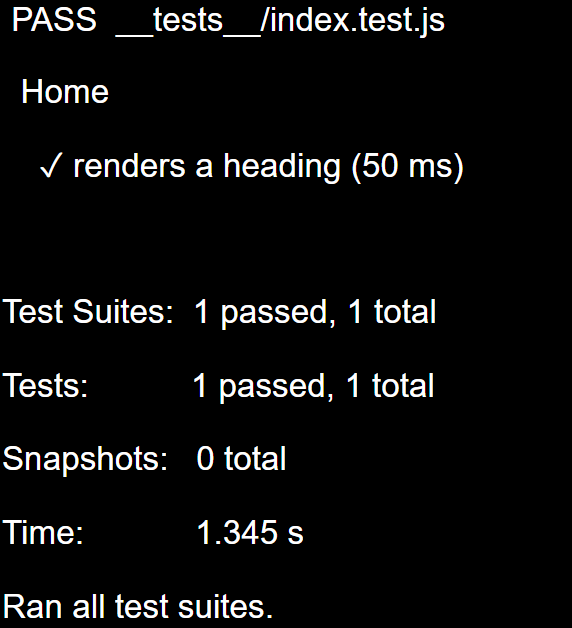
|
|
Jest is a delightful JavaScript testing framework with a focus on simplicity. It’s widely used with React applications and integrates well with Next.js to provide robust testing capabilities. This article explores how to set up and use Jest for testing in a Next.js application. Steps to Create an Application with Jest TestingStep 1: Create a Next.js application npx create-next-app@latest Step 2: Install Jest npm install --save-dev jestStep 3: Install React Testing Library npm install --save-dev @testing-library/react @testing-library/jest-domStep 4: Create Jest configuration, Create a jest.config.js file with the following content module.exports = { Step 5: Create Jest setup file, Create a jest.setup.js file with the following content import '@testing-library/jest-dom/extend-expect';Updated Dependencies in package.json File, Update your package.json to include the necessary scripts and dependencies "scripts": { Folder Structure:
Step 6: run your test npm run testOutput: When you run the test with npm test, you should see an output similar to this  Terminal output |
Reffered: https://www.geeksforgeeks.org
| ReactJS |
| Related |
|---|
| |
| |
| |
| |
| |
Type: | Geek |
Category: | Coding |
Sub Category: | Tutorial |
Uploaded by: | Admin |
Views: | 21 |